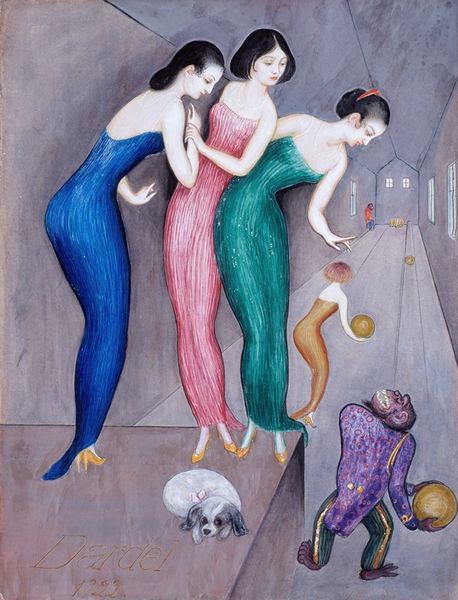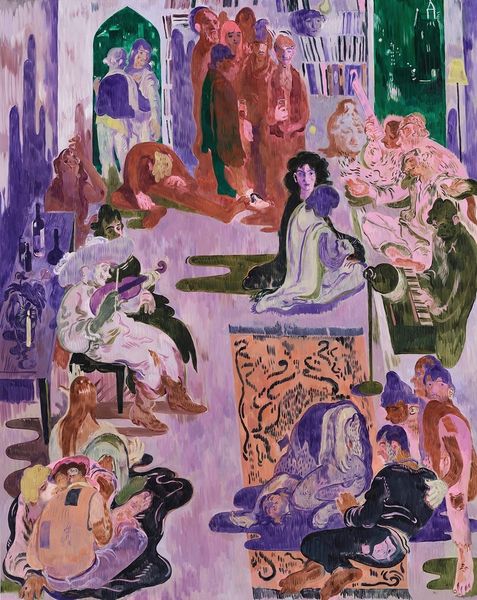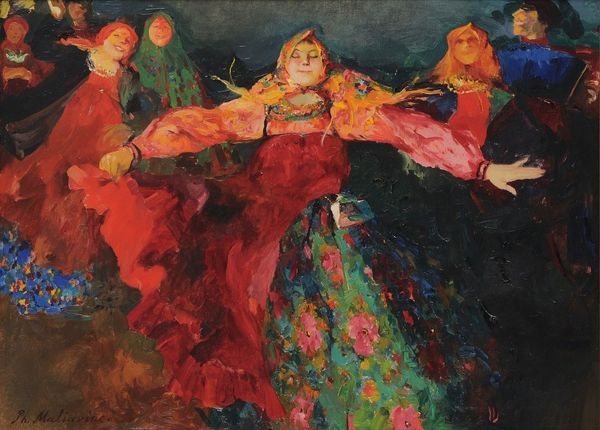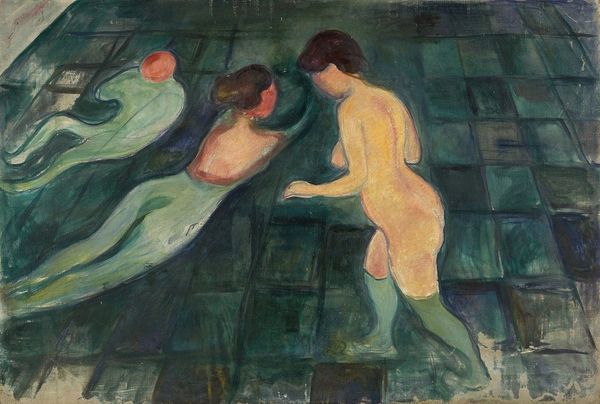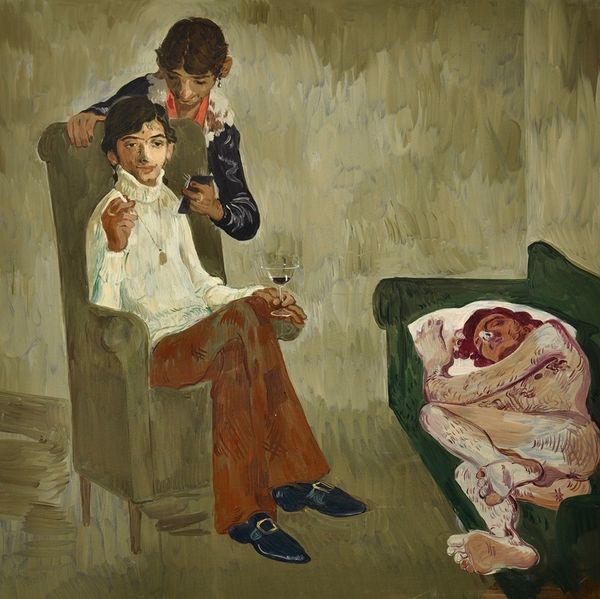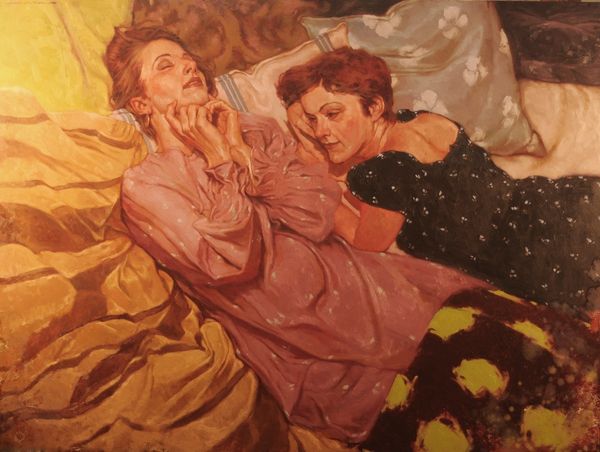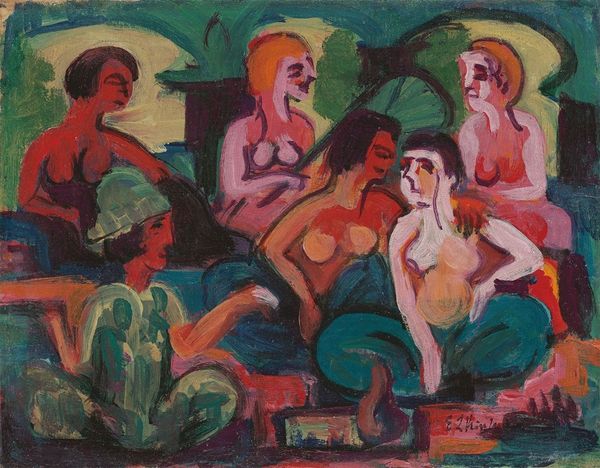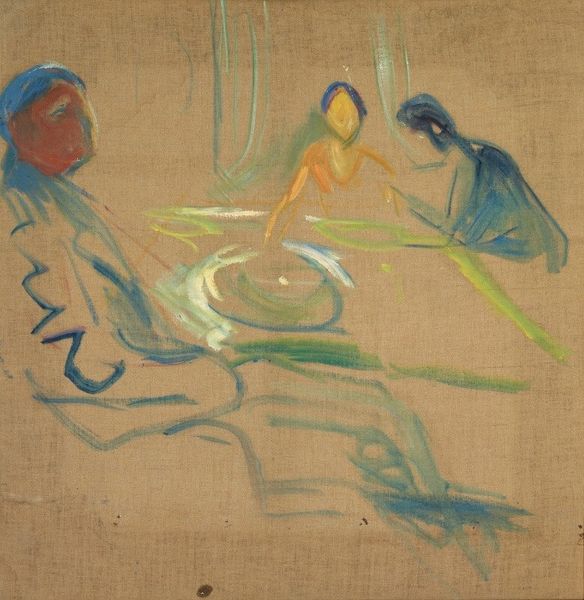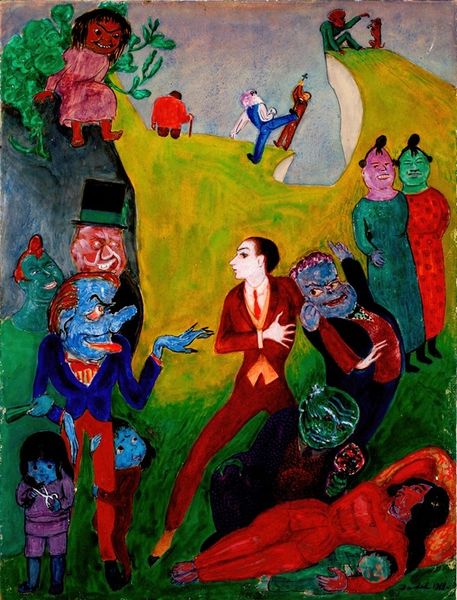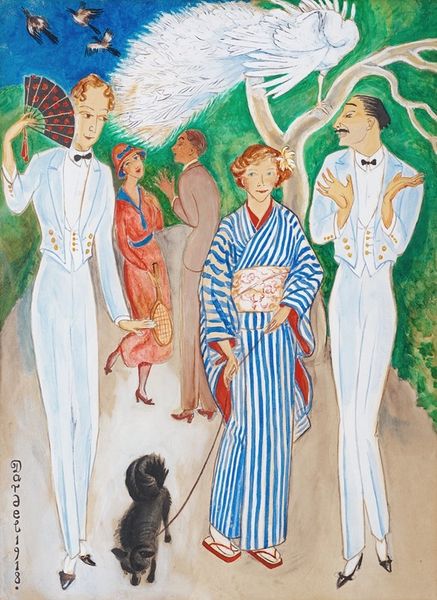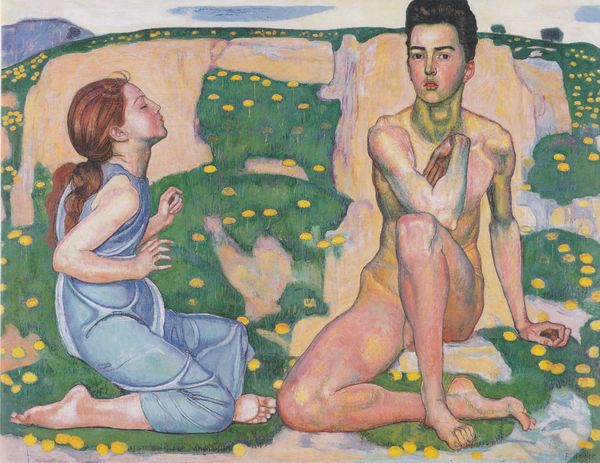
oil-paint
#
portrait
#
figurative
#
oil-paint
#
figuration
#
oil painting
#
group-portraits
#
expressionism
#
surrealism
#
surrealist
#
surrealism
#
portrait art
#
modernism
#
expressionist
Copyright: Public Domain: Artvee
Editor: "The Dying Dandy," painted in 1918 by Nils Dardel, uses oil on canvas. It’s quite striking. The colors, although somewhat muted, evoke a sense of both stillness and suppressed drama. The figure is surrounded by others but feels incredibly isolated. What compositional elements stand out to you? Curator: Immediately, the interplay of color fields demands attention. Consider the chromatic relationships: the juxtaposition of the dandy’s pale green suit against the darker background, setting the mood; it generates a compelling tension. Then there’s the mirroring – what purpose do you ascribe to the repeated angles of the onlookers heads, bent downward? Editor: Perhaps a unified sense of sorrow, or concern? They all seem disconnected, almost stylized. Does their detachment amplify the central figure’s vulnerability, especially with that discarded mirror at his feet? Curator: Precisely. The mirror is pivotal. What semiotic function does it fulfill? The mirror is a potent signifier of vanity, self-regard; here it lies discarded. It’s no longer reflecting the figure; it’s reflective of loss, of transition. What about the placement of the figures surrounding him - any thoughts? Editor: The placement is very formal and almost staged, and yet the lack of direct interaction, even physical touch, makes the scene feel incredibly detached. Like each figure is in their own separate world, yet forced together by circumstances. It seems deliberate, not spontaneous. Curator: Indeed, consider how the painting's form reinforces that narrative. It speaks of a specific aesthetic program. So, from our formal and semiotic analysis, can we derive insight into the deeper meaning of the painting, and this man's impending 'death'? Editor: The color choices and arrangement evoke melancholy, that the dying man isn't only leaving the world but also all of his beloved vanity is with him. It's almost as if he's left with no part of his former life, surrounded by grief and forced solitude. Curator: A poignant reading. By examining the formal components—the colors, the composition, the semiotic load—we’ve unlocked deeper emotional resonance, revealing Dardel's masterful approach.
Comments
No comments
Be the first to comment and join the conversation on the ultimate creative platform.

